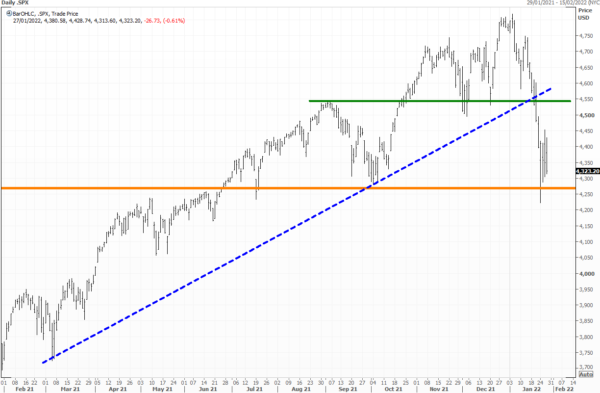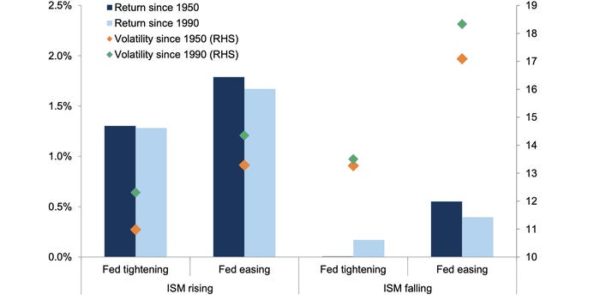@rawflcopter
This was the extract from the article. Nothing harmful in it.
With US stocks now, near-term, oversold, I am expecting a rally back to the resistance level to the 4500,as the reporting season confirms the strong state of the US economy. The better-than-expected US GDP numbers released today should underpin another strong quarter.But technically, the correction is likely not over yet following the S&P500’s breakdown below upward trendline and a retest of this week’s lows is possible over coming weeks before the markets finally move on.However, I need to see the January rout in stocks’ as a much needed correction in an ongoing bull market cycle. This bull market cycle has further to run this year in my view.
The recovery in US equities when it arrives (I expect a bottom in coming weeks), could therefore be equally explosive on the topside.For now, it’s all about“riding the volatility”and not giving into the pervasive fear and panic, which typically accompany market bottoms.
International equities on the other hand might continue to display more resilience and I am anticipating a much quicker recovery in the likes of Asia and Europe, where central banks remain out of lockstep with the Fed’s move to raise rates. Australian and Japanese futures are both pointing to a strong bounce today.
S&P500
Whilst Jeremy Grantham doubled down on his “crash call” this week, other major investment banks have turned decisively bullish.JP Morgan reiterated their call this week to buy the dip in equities and see global stock markets quickly recovering from the January selloff.
Goldman Sachs joined the “buy the dip” side this week and in a recent note reinforced my view that the Fed will likely err on the side of caution.Goldman Sachs strategists said the central bank will likely hike rates to relatively low levels.This argument has merit, given the precedent of the Fed to hold back in the face of volatility, and above all, Fed Chair Powell and company will not want to derail the economic recovery by moving to fast.
Goldies noted that“any further significant weakness at the index level should be seen as a buying opportunity although with moderate upside through the year as a whole.”Goldman argued this week that the “sell-off in US equities is a correction with a bull market cycle should continue and remain in a growth phase. The selloff should not turn into a bear market cycle.The key is growth. Higher interest rates typically aren’t negative for stocks as long as economic activity is still expanding.”
“Historically, a Fed tightening cycle that is accompanied by accelerating growth that tends to be associated with strong returns and relatively low volatility. Meanwhile, a tightening cycle into slowing growth is associated with very low, but positive, equity returns alongside high volatility. It is this second combination that the markets seem to be pricing.”Equities tend to digest Fed tightening much better with rising growth.
ISM; Average monthly S&P500 returns and volatility with different growth/policy mix Bloomberg, Goldman Sachs Global Investment Research
Fundstrat also sees a similar outcome for the US market and noted that“investors need to recognize that such a swift decline can be met with as swift of a recovery.The faster the decline, the faster the recovery. The stock market could find its bottom in January, which if reached could lead to record new highs for the stock market in February.”
“We expect a violent bounce to ensue, once stocks have bottomed. And it seems like our strategists are seeing this incremental possibility of a bottom.” Fundstrat’s head of global portfolio strategytold clients to “buy the bottom”on Monday, while the research firm’s head of technical strategy said a bottom might emerge this week.
“If the correction lasted 14 to 20 days, the bounce to recovery highs will be 10 to 15 days, meaning a low in January points to new highs in February. When investors are bearish, this often points to positive forward returns.The rationale being that by the time everyone is bearish, a lot of bad news is baked in. And thus, equities can form a tradable low.”
- Forums
- General
- Tickers to buy
@rawflcopterThis was the extract from the article. Nothing...
-
-
- There are more pages in this discussion • 4,917 more messages in this thread...
You’re viewing a single post only. To view the entire thread just sign in or Join Now (FREE)







